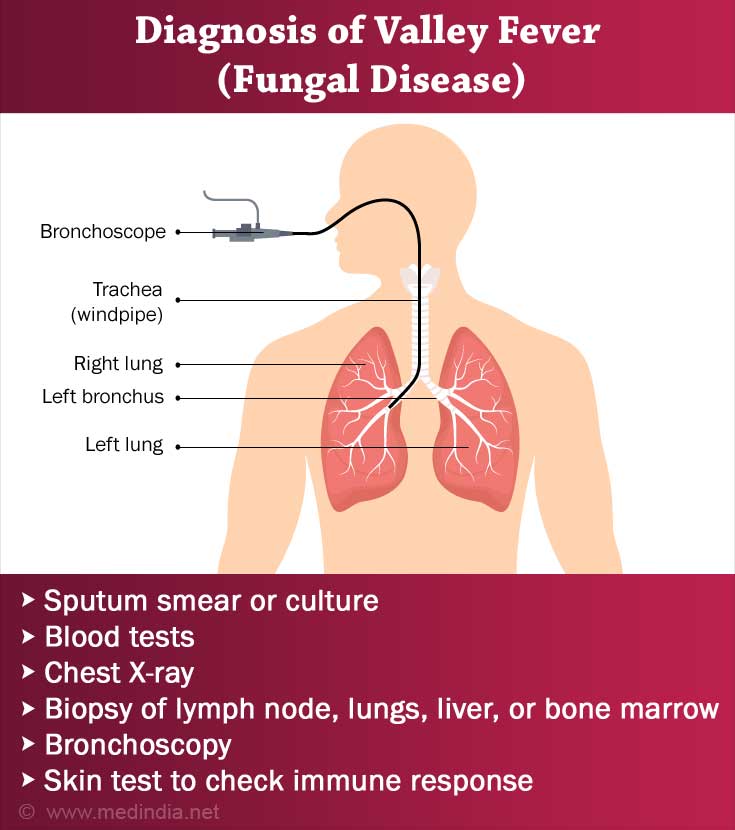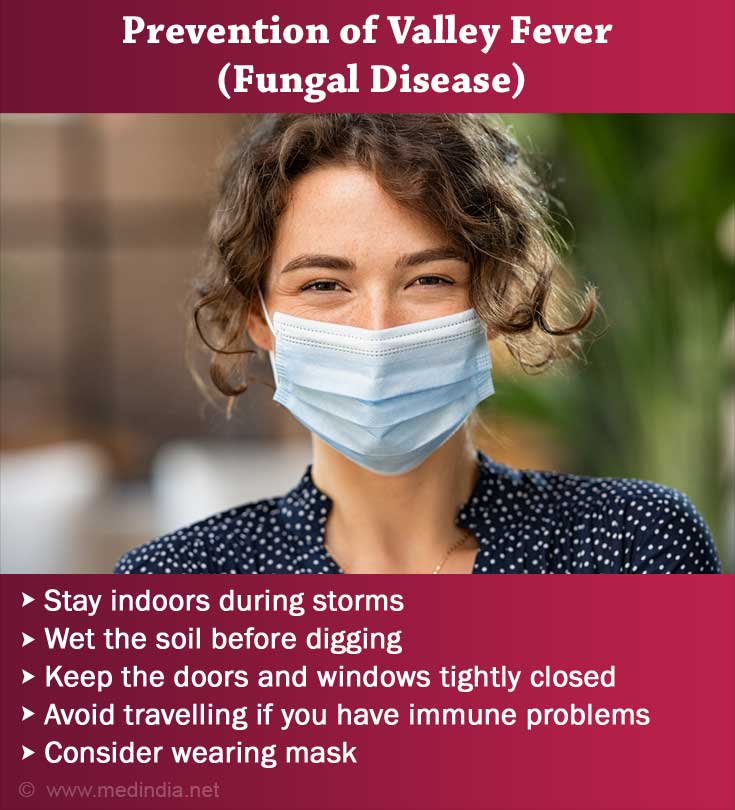- Valley fever - (https://www.nlm.nih.gov/medlineplus/ency/article/001322.htm)
- About Valley fever - (http://www.mayoclinic.org/diseases-conditions/valley-fever/basics/definition/con-20027390)
What is Valley Fever?
Valley fever or coccidioidomycosis is an initial form of infection that occurs by breathing the microscopic spores of the fungus Coccidioides immitis from the air.
The fungus enters the body through lungs. This initial, acute illness can turn into a more serious disease, which includes chronic and disseminated coccidioidomycosis. Valley fever is not contagious i.e, it doesn’t spread to people.
What are the Causes of Valley Fever?
It can be caused by breathing of the fungus from the air. The infection begins in the lungs. People who develop an infection include:
- Those with weakened immune system, for example people who:
- Have cancer, AIDS, diabetes
- Have undergone chemotherapy
- Conditions affecting the heart and lungs
- Are taking glucocorticoid medications like prednisone
- Had an organ transplant
- First trimester of pregnancy
- Travelling to an area prone to fungus raises the risk of infection.
- Race
- Age
What are the Symptoms and Signs of Valley Fever?
In some people no symptoms may be present, whereas others may have cold or flu-like symptoms. Symptoms usually appear after 5 to 21 days of fungal exposure.
Acute valley fever/coccidioidomycosis is often mild and not severe. Symptoms include: fever, cough, chest pain, night sweats, chills, fatigue, headache, joint aches, red, spotty rash.
Chronic valley fever/coccidioidomycosis occurs if initial coccidioidomycosis infection has not resolved and it may further progress to a chronic form of pneumonia. This complication occurs in people with weakened immune systems. Symptoms include:
- Low-grade fever
- Fatigue
- Weight loss
- Cough
- Swelling in ankle, leg & feet
- Shortness of breath
- Headache
- Mild to severe chest pain
- Cough, possibly blood-tinged sputum
- Sweating at night
- Appetite loss
- Pain and red lumps on lower legs
- Stiffness in joint and pain or muscle aches

Disseminated coccidioidomycosis rarely occurs when there is a spread of infection from lungs to other body regions: skin, bones, joints, lymph nodes, and central nervous system or organs. In such cases sickness may be more severe and people affected by it can have:
- Mental status change
- Enlarged or draining lymph nodes
- Swelling in joints
- Severe lung symptoms
- Light sensitivity
- Loss in weight
Facial skin sores or lesions may also result due to disseminated coccidioidomycosis.
How to Diagnose Valley Fever?
As signs and symptoms are usually vague and often overlap with other illnesses, a definitive diagnosis is needed to find evidence of Coccidioides organisms in tissue, blood or other body secretions. One or more of the following tests can be done:
For milder form of valley fever:
- Sputum smear or culture used for detecting the presence of Coccidioides organisms while coughing.
- Blood tests are done to detect antibodies against the fungus causing valley fever.
- Chest X-ray
For more severe or widespread forms:
- Biopsy of lymph node, lungs or liver, bone marrow
- Bronchoscopy with lavage

- Spinal tap: for ruling out meningitis
How is Valley Fever Treated?
The disease normally goes away without treatment. Bed rest and treatment for flu-like symptoms (until fever disappears) may be recommended. For people having weak immune system, antifungal drugs like amphotericin B, fluconazole, or itraconazole are recommended. For more serious infections, newer medicines like voriconazole and posaconazole (Noxafil) may also be used.
A surgery may sometimes be required for removing infected part of the lung (in case of chronic or severe disease).
Prevention of Valley Fever - Health Tips
If living in or visiting areas, where valley fever is common, few precautions are required. Chances of infection become high during summer. At such times:
- Staying indoors during storms
- Wet the soil before digging
- Keeping doors and windows tightly closed.
- Travelling should be avoided by people having immune problems (like AIDS patients or those on immuno suppressive drugs) to areas prone for valley fever fungus type.
- Consider wearing mask








